Author: Will Lovell
According the BJCP, Rauchbier is described as basically “a beechwood-smoked, malty, amber German lager” with a generally Märzen-like profile that’s made with a “sizeable quantity” of smoked malt. What exactly does this mean? A review of multiple recipes available online indicate usage rates ranging from a low of about 20% to upwards of 60%, though as a base malt, it can be used as 100% of the grist.
While loathed by many, Rauchbier certainly has a captured the hearts of a segment of beer drinkers and brewers, and the amount of smoked malt to use is a topic of debate, with some contending it should be the majority of the malt bill while others prefer a more nuanced smoke character. Indeed, claims have been made that too much smoked malt can lend an unpleasant phenolic flavor, to the point the desired campfire and bacon are replaced by ashy and medicinal notes.
I happen to be among the few who love Rauchbier, which was unquestionably inspired by my experiences drinking it while living in Germany. Unsurprisingly, it’s also a style I enjoy brewing, and I’ve anecdotally found that 45% smoked malt gets me where I want to be. However, I recently began to wonder about the impact using more smoked malt might have, particularly if there’s a sort of saturation point of smoke character, so I designed an xBmt to see for myself.
| PURPOSE |
To evaluate the differences between a Rauchbier made with 44% smoked malt and one made with 63% smoked malt.
| METHODS |
For this xBmt, I went with a Rauchbier recipe I’ve had good luck with in the past, replacing a portion of the Pilsner malt with additional smoked malt in one batch.
Rauch Your Socks Off
Recipe Details
| Batch Size | Boil Time | IBU | SRM | Est. OG | Est. FG | ABV |
|---|---|---|---|---|---|---|
| 5.5 gal | 60 min | 23.2 | 11 SRM | 1.053 | 1.013 | 5.25 % |
| Actuals | 1.053 | 1.013 | 5.25 % | |||
Fermentables
| Name | Amount | % |
|---|---|---|
| Smoked Malt | 8.75 lbs | 62.78 |
| Czech Pilsen Malt | 3 lbs | 21.52 |
| Munich I | 1.937 lbs | 13.9 |
| Carafa I | 4 oz | 1.79 |
Hops
| Name | Amount | Time | Use | Form | Alpha % |
|---|---|---|---|---|---|
| Hersbrucker | 45 g | 60 min | Boil | Pellet | 4.3 |
| Hersbrucker | 21 g | 5 min | Boil | Pellet | 4.3 |
Yeast
| Name | Lab | Attenuation | Temperature |
|---|---|---|---|
| Harvest (L17) | Imperial Yeast | 74% | 50°F - 60.1°F |
Notes
| Water Profile: Ca 58 | Mg 0 | Na 0 | SO4 73 | Cl 48 |
Download
| Download this recipe's BeerXML file |
I started my brew day by adding identical volumes of water to separate Delta Brewing AIO units, adjusting each to the same mineral profile, and setting the controllers to heat them up before milling the grain.
When the water for each batch was adequately heated, I incorporated the grains then set the controllers to maintain them at the same target mash temperature, at which point I prepared the kettle hop additions.
Once each 60 minute mash was complete, I removed the grains then proceeded to boil the worts for 60 minutes, adding hops as listed in the recipe.
When the worts were done boiling, I took refractometer readings showing both were at nearly the same OG.
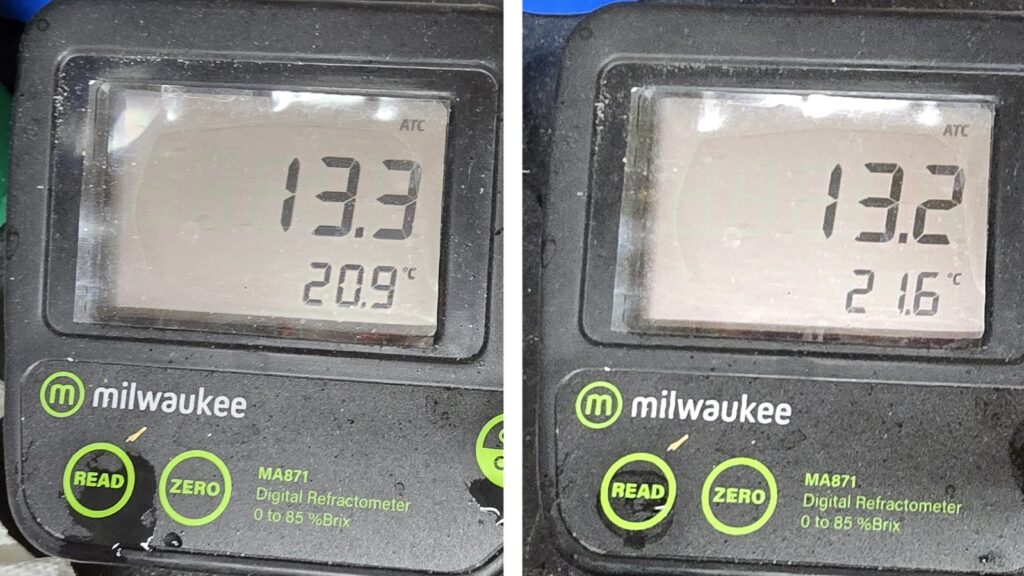
I transferred identical volumes of wort from each batch to Delta Brewing FermTanks that were attached to my glycol system and left to finish chilling to my desired fermentation temperature. Within 10 minutes, both worts were stabilized at 64°F/18°C, so I pitched a pouch of Imperial Yeast L17 Harvest into each.
With signs of activity absent 2 weeks later, I took hydrometer measurements indicating fermentation was complete.

The beers were cold crashed to 34°F/1°C overnight, after which they were pressure transferred to CO2 purged kegs that were placed on gas in my keezer. After 4 weeks of lagering, the beers were ready for evaluation.

| RESULTS |
A total of 27 people of varying levels of experience participated in this xBmt. Each participant was served 2 samples of the beer made with 44% smoked malt and 1 sample of the beer made with 63% smoked malt in different colored opaque cups then asked to identify the unique sample. In order to reach statistical significance, 14 tasters (p<0.05) would have had to accurately identify the unique sample, but ultimately, just 5 did (p=0.97), indicating participants in this xBmt were unable to reliably distinguish a Rauchbier made with 44% smoked malt from one made with 63% smoked malt.
My Impressions: Out of the 5 semi-blind triangle tests I attempted, I correctly identified the odd-beer-out every time. For me, the aroma differences were a dead giveaway, as the version made with more smoked malt had a stronger smoke character than the one made with less smoked malt. While both beers were great, I was somewhat surprised to discover I preferred the batch made with 64% smoked malt.
| DISCUSSION |
Rauchbier is a traditional German smoked lager that gets its smokey character from smoked malt, which is typically germinated and kilned over burning hardwood. While it can make up the entire grain bill, the recommended usage rate ranges from about 20% to 60%, though some feel there’s a sort of saturation point where amounts beyond that threshold contribute little to no perceptible increases in smokiness. Indeed, tasters in this xBmt were unable to reliably distinguish a Rauchbier made with 44% smoked malt from one made with 63% smoked malt.
While it’s certainly possible these results are a true indication of diminishing returns when using smoked malt, another plausible explanation has to do with the tasters’ familiarity with and preference for Rauchbier. Smoked beers are an acquired taste, and for those who have minimal experience drinking them, or simply don’t like them, the differences in smoke pungency would likely be difficult to perceive through the unusual flavor of the beers. This might explain my own ability to consistently distinguish these beers, as I not only have ample experience drinking Rauchbier, but I also love the style.
Over the many batches of Rauchbier I’ve brewed, I settled on using around 45% of smoked malt, in part because it was over double the recommended usage rate for the style, and I’ve been happy with the results. However, despite blind tasters being largely unable to tell these beers apart, I was quite easily able to do so, and I definitely preferred the one made with more smoked malt. As such, I’ll be adapting my house Rauchbier recipe to include a higher proportion of smoked malt!
If you have any thoughts about this xBmt, please do not hesitate to share in the comments section below!
Support Brülosophy In Style!
All designs are available in various colors and sizes on Amazon!
Follow Brülosophy on:
FACEBOOK | TWITTER | INSTAGRAM
If you enjoy this stuff and feel compelled to support Brulosophy.com, please check out the Support page for details on how you can very easily do so. Thanks!











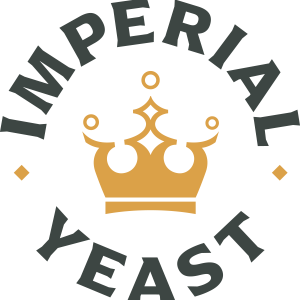

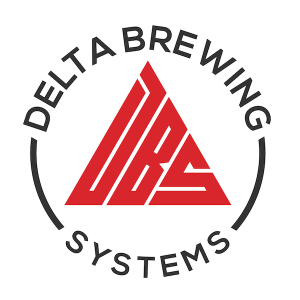
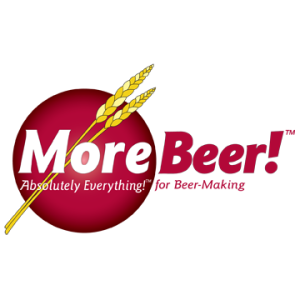
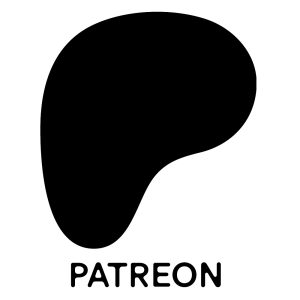
9 thoughts on “exBEERiment | Smoked Malt: 44% vs. 63% Usage Rate In A Rauchbier”
Cheers to the Rauchbier lovers! Thanks for this experiment. I think I would have been able to tell the difference as well. I have a Schlenkerla Urbock clone recipe that uses 76% of either pecan or cherrywood smoked malt and I think it tastes fantastic. Maybe I’ve always received old beechwood smoked malt but I don’t think it gives off enough smoked character.
I think it would also be interesting to compare smoked malts in the same recipe. I’ve never like Beechwood malts, but I thoroughly enjoy Pecan and Cherry. Perhaps the transition to phenolics depends on the wood species used, but might also simply be due to the particular smoking processes of the maltster.
Rats, I see above in a ‘related’ link that this has already been done!
I brew with Weyermann Rauchmalz (beechwood smoked malt) a few times a year for many years. For the typical Rauchbier I have used between 60 to 80% smoked malt. While the smoke character does increase with greater usage it doesn’t seem to be linear to me. It reaches a certain point of smokiness then increases only slightly (I would have trouble telling the difference between a 70% and 80% Rauchbier).
The Schlenkerla Brewery of Bamberg smoke kiln their malts. Comparing their Marzen Rauchbier (100% smoked malt) to my 70-80% smoked malt Rauchbier side by side there is a difference but not in smoke intensity to my tastes.
Their smoked Helles (no smoked malt just the character from the yeast and brewing equipment) is just as smoky as my Helles with 20% smoked malt.
Their smoked wheat beer gains its character from their smoked barley, the wheat is not smoked. It still has a significant smoke character.
Also the smoke character can vary significantly with the age and storage of the Rauchmalz.
Just my observations. Brew your own smoked beers and make your own conclusions.
Yea, my guess is that beechwood smoked malt is more volatile to storage and looses it’s character rather quickly. The stronger smokes such as pecan and cherry seem to hold on to their character a lot longer.
I don’t know if it has as much to do with wood type or with method of smoking? A lot of domestic maltsters use a cold smoking method on barley that has already been kilned. This imparts a very strong, and borderline acrid, smoke character. Weyermann, at least my understanding, is that they use the actual wood during kilning. I have not used Sugar Creek, but I’m interest to see if they’re smoke house is closer to the cold smoked method or if its a bit more subtle. I hate acrid smoked beers, which is why I like Weyermann.
I use 95% smoked malt in my marzen-style rauchbiers, and I find Weyermann doesn’t yield enough smoke character for me. I get a bit more intensity from Bestmalz, and more still from Castle Maltings. These are all beech wood smoked malts. I guess I’ve never had a rauchbier I’ve found too smokey 🙂
What’s funny is that I recently brewed a smoked Helles with a mere 18% of Beechwood smoked in the malt bill and I find it to be amazingly crushable. So much more a Helles than a rauchbier. While I love a punchy rauch, I also see the smoked Helles emerging more often as an approachable “gateway” rauchbier.
I love a good smoked Helles, but probably prefer the old school Rauchbier with a Marzen base. Primary reason is likely nostalgia, but I also think the balance between the smoke and the sweet of the munich malt is a fun lever to play with.